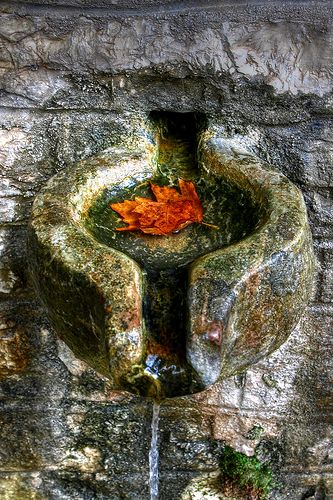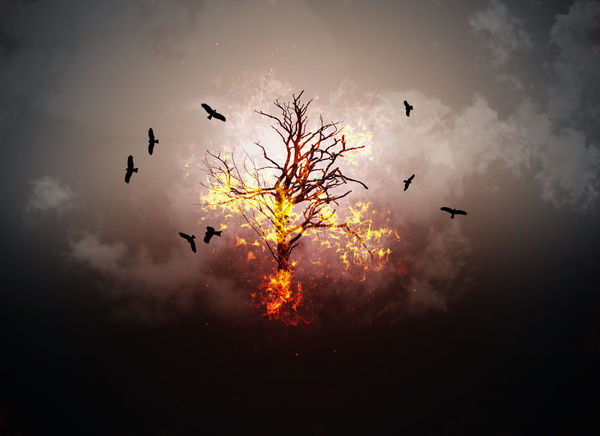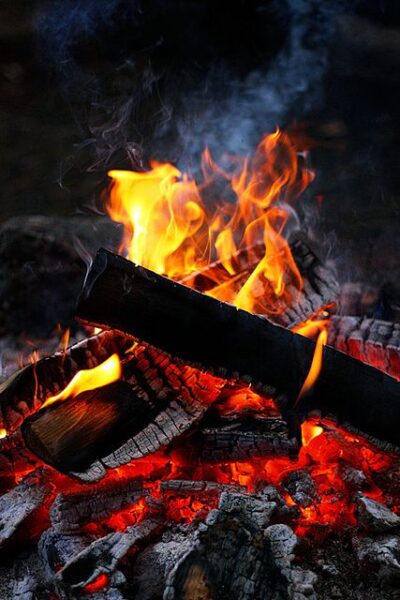Top 15 Greek Christmas and New Year Traditions

Greek Christmas and New Year Traditions
Greece is no exception and seems to have more than its fair share of Christmas and New Year celebrations.
The twelve days of Christmas end on the sixth of January with the celebration of Epiphany, or as it’s called in Greek Theophania or, Ton Foton
Greek Father Christmas is not Saint Nicholas but Saint Basil (Vasilis), who, being Greek and true to form, arrives a week late; on New Year’s Eve.

Basil of Caesarea, also called Saint Basil the Great
Saint Vassilis, or Agios Vassilis, has much in common with Saint Nicholas; the western Father Christmas; Santa Claus.
Both are known for their compassion, kind heartedness and their commitment to helping the unfortunate, both bring gifts around Christmas time, one just a little later than the other.
Christmas trees were introduced to Greece in the 1830s by King Otto but didn’t really become popular until about the 1940s.
The Greek equivalent of the Christmas tree is the ‘karavaki” or Christmas boat, a wonderful tradition, which after falling out of favour, I’m glad to say, is making a comeback…big time!
For the observant Orthodox Greek, the forty day fast for Christmas, known as the advent fast, ends on Christmas day with the breaking of ‘Christopsomo’ – Greek bread of Christ, which was baked the day before, on Christmas Eve.

Christopsomo – Greek Christmas bread
Below are 15 of the most popular Greek New Year customs and traditions:
1. Ta Kalanda (Carol Singing)

Kalanda – Greek Carol Singing
Children are up and about bright and early to sing the kalanda – Greek carol singing on three specific days over Christmas: Christmas Eve, New Year’s Eve and the Eve of Epiphany; (5th January).
They go from house to house, singing usually only the one same song, accompanied by a triangle which is randomly rattled with no tune at all!
Before they comence singing they will knock on your door shouting “Na ta poume?” meaning “Shall we sing?”.
2. Card Playing

Paul Cezanne – “The Card Players”
As New Year is considered a lucky time, it’s the perfect excuse for a card-playing marathon and I mean marathon!
The games go on for hours, starting early evening and lasting until midnight, usually at home but there are organised games in the “Kafenion” (Coffee shop) and clubs.
3. Pomegranate Smashing

The pomegranate, an ancient symbol of prosperity and good luck
A pomegranate, an ancient symbol of prosperity and good luck, is hung above the door throughout Christmas.
At midnight, on New Year’s Eve, the lights are turned out and the pomegranate is then hurled to the floor, or at the door, where it smashes, spilling out its seeds.
The more seeds the better!
This helps ensure luck, health, happiness and prosperity for the coming year.
4. The Big Onion

Squill or Sea Onion – Skeletoura- in Greek, The Big Christmas Onion!
Now this is a custom I had not heard of and neither had MGG (My Greek God) but on seeing a picture of the skeletoura, (Squill, sea onion), I realised I had seen them hanging about in Greek houses, at New Year, usually with the bulb part wrapped in foil.
A large onion,skeletoura, or sea onion, used by Greeks in ancient times to worship Pan, God of the wilds and of nature, is hung above the door.
This onion, even when uprooted, will continue to grow layers and blossom; it’s said to have magical powers and is the symbol of rebirth.
At midnight it’s taken down and in the morning the children of the family are whacked on the head with it, in order to wake them up, so they can attend the church service for Saint Vassilis!
Well I never!
This onion is kept in the house until the next New Year to bring longevity, health and luck.
5. The Renewal of Waters
 Painting by Henry Ryland.jpeg)
Two Women of Ancient Greece Filling Their Water Jugs at a Fountain (women of Corinth). Painting by Henry Ryland
Another custom I’m not familiar with; on New Year’s Day all water jugs in the house are emptied and refilled with “Saint Vassili’s” water” or “Saint Basil’s water”
I didn’t manage to learn what Saint Basil’s water actually is, MGG is more than useless when it comes to questions like this, the following is what I discovered for myself.
Saint Basil’s water is simply water collected on Saint Basil’s Day, sometimes blessed by a priest, some say this is done to keep evil spirits away from the house.
The ceremony is often accompanied by giving offerings or gifts to Naiads (Water nymphs).
6. The Hairy or Mossy Pebble

Mossy pebbles
Things are becoming stranger by the minute!
This tradition I have heard of, it actually means a stone covered with moss or depending on who you ask, it only needs to be wet.
A stone, preferably covered with moss, is collected from a beach, a river, a pond, basically anywhere there is water, taken home and left outside the door.
Here again things become rather vague, some say, the stone is to be put inside the house.
On entering the house for the first time on New Year’s Day you must step on the stone.
This supposedly brings luck and good fortune.
7. Kalo Podariko (First Footing)

First Footing
No confusion with this one, I think it’s practiced in many countries throughout the world, it certainly is in Britain.
At the stroke of midnight someone considered lucky, or a child, due to the fact they are pure and innocent, are sent outside and ordered to re-enter, right foot first, to bring good luck for the following year.
All windows are thrown open to let out the Kallikantzaroi, evil spirits, or mischievous Christmas goblins.
8. Kali Hera (Good Hand)

Kali Hera – Good hand
This is the practice of giving money to children; nieces, nephews, grandchildren etc. who may be present after midnight on New Year’s Eve or on New Year’s Day when they come to visit.
9. The Vassilopita (Greek New Year’s Cake)

The Vassilopita (Greek New Year’s cake)
Every Greek family has its vasilopita, the New Year’s cake, concealing a lucky coin.
After midnight the Vassilopita is sliced and handed round by the head of the family.
A cross is scored over the surface, the first slice is for Jesus Christ, the second for The Virgin Mary, the third for Saint Vassilis, the fourth for the house and then a slice for each member of the family, starting with the oldest.
Whoever finds the lucky coin has good luck and good fortune for the rest of the year.
10. Agios Vassilis – Saint Basil (Greek Santa Claus)

Agios Vassilis – Greek Santa Claus
Ho Ho Ho, it’s New Years’ Eve and Santa’s arrived with his sack full of presents.
Even though he has a different name and arrives a week later, Agios Vassilis looks a lot like Christmas!
Like Saint Nicholas, that is; a jolly, red-clad, chubby chap, sporting a long white beard.
11. Greek Sweet Christmas Treats

Traditional Greek Christmas Sweets
It wouldn’t be Christmas without traditional, Greek Christmas sweets, something deliciously sweet and fattening!
The usual sweets are snowy kourabiethes; Greek Christmas cookies filled with almonds and drenched in icing sugar.
Melomakarana; Sticky sweet and soaked in honey, with a tang of spicy cloves.
Diples; thin strips of dough, folded and fried, sprinkled with chopped nuts and honey.
And of course, baklava, layers of phyllo pastry, filled with chopped nuts, covered in sweet syrup.
12. Feeding the Fountain

Spring water – Kalarrytes – Ioannina -Photo by Dimtze on flickr
In Thessaly, central Greece, on Christmas Eve at the stroke of midnight, young women make their way, in complete silence, to the nearest fountain or spring to collect ‘speechless water’.
Whilst making a wish, to ensure a sweet year ahead, the young women ‘feed’ butter or honey to the spring.
The girl who arrives first at the spring, will have the most luck.
13. The Flaming Yew

Burning branches – Photo © Rui Almeida Photography
A Christmas and New Year custom in Epirus, Northern Greece,
On their way in the black of night, to visit baby Jesus, the three kings gathered dry yew branches, set them alight and used them as torches to light the way.
Today in small villages of Epirus, people can still be seen at Christmas time walking about with a flaming yew branch, wishing a merry Christmas to one and all.
14. The Marriage of Fire

Burning wood – the marriage of fire. Greek Christmas custom. Photo by szefi on flickr
On Christmas Eve in Edessa, Northern Greece, locals gather branches of wood, girls take wood from female trees, such as cherry, and the boys, from a male tree, a sort of thorny briar wood called Vatos.
The branches are laid in the fireplace in the shape of a cross and set alight.
Depending on how the wood burns, quickly, or slowly, with or without flames, noisily or quietly, someone with the knowledge of the custom, can predict how the year ahead will turn out, whether or not the crops will do well, how the weather will be and in general whether it will be a good year.
In Thessaly, central Greece, on returning from church, girls burn cedar wood and the boys wild cherry, whoever’s branch burns first is the one who shall marry first.
15. Spordisma (The Burning of Leaves)

Olive leaves
On the island of Thassos burning embers are removed from the fire and put onto a heat – proof surface.
Then whilst making a wish, olive or oak leaves are spread over the hot embers.
The one whose leaves curl the most will have their wish come true.
Merry Christmas and a Happy New Year!
And there you have the makings of Christmas and New Year Greek style.
To one and all I wish a very Merry Christmas and a Happy New Year and thanks for reading my blog, which, without you all would not exist!



